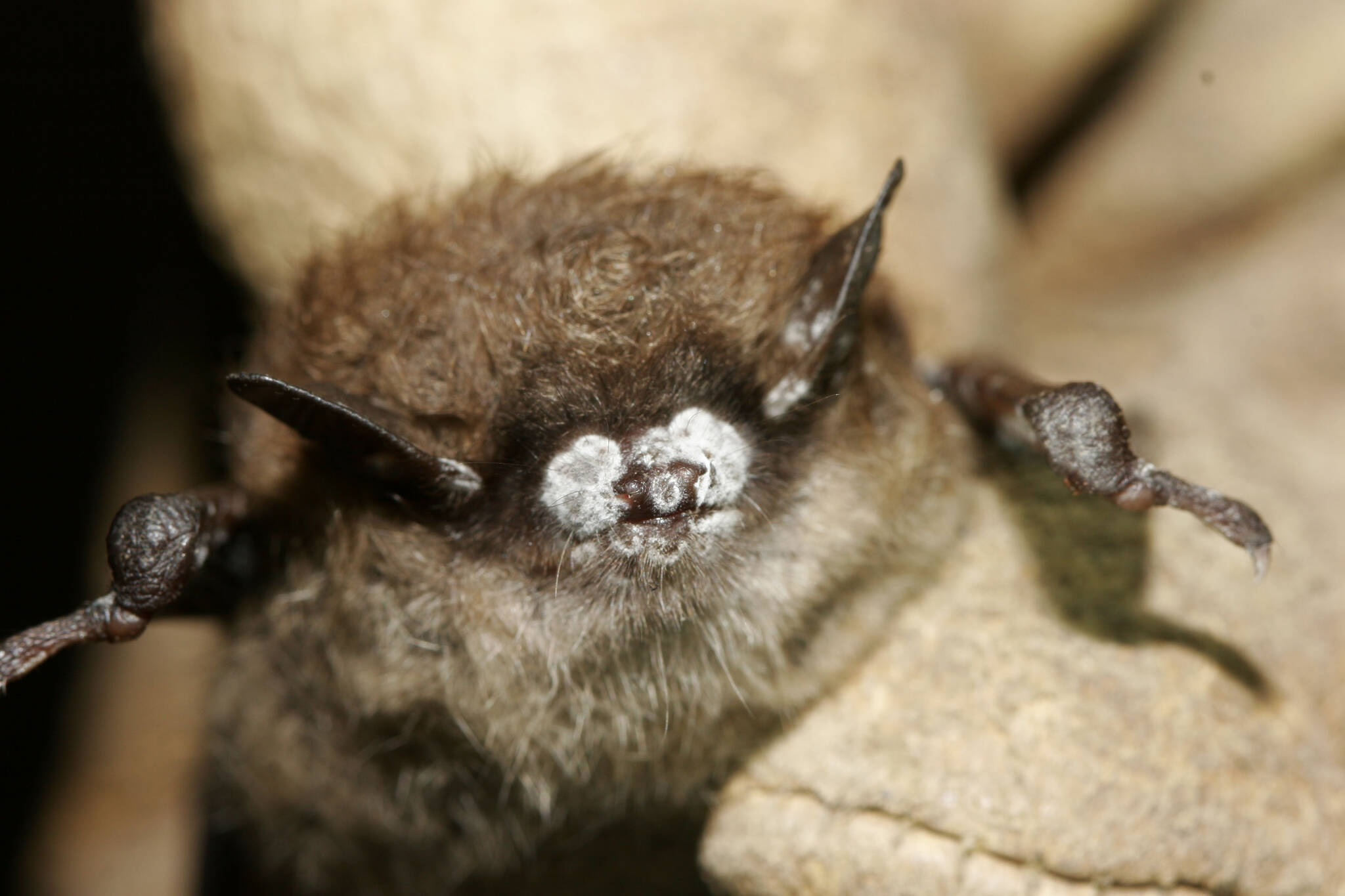White-nose syndrome, a fungal disease, has killed off millions of bats in eastern North America since 2006, wiping out entire colonies during hibernation.
In recent years, the disease is encroaching nearer and nearer to Island County, with cases reported in King, Snohomish and Jefferson counties, but Whidbey’s bats seem, for now, safe. According to local bat experts, the reason may lie in the island’s climate and the resulting roosting habits.
The fungus causing white-nose syndrome grows on the nose, wings and ears of an infected bat during hibernation, giving a fuzzy, white appearance, the state Fish and Wildlife Department reports. Infected bats stir from their torpor to groom, spending crucial fat reserves, leading to their starvation.
The syndrome can also damage wings, prevent bats from regulating body temperature, disrupt their breathing and dehydrate them. The first confirmed case in the Western United States was in March 2016 near North Bend in King County and has spread from there, according to a 2023 study published in the Journal of Wildlife Diseases.
The fungus was likely introduced to Washington in 2014, the study reports, and within seven years researchers found 163 confirmed cases in seven counties across Washington.
The disease primarily victimizes the myotis or mouse-eared bat family. Little brown bats are the most common, though the disease could prey upon four of Whidbey’s nine bat species, said Sarah Schmidt, a bat rehabilitator with Happy Valley Bats.
Bats are considered keystone species for their roles as pollinators, seed dispersers and pest controllers, often consuming disease-carrying insects. Farmers rely on bats to reduce crop damage and pesticide costs. Little brown bats weigh less than ten grams and blend in with the night, doing much of this work with little recognition. Their decimation would have sweeping effects across the entire ecosystem.
The disease was first reported in New York and Vermont, which has a much different climate than Whidbey, Schmidt said. With long, dark, cold winters on the East Coast, there are fewer suitable roosts for hibernation, resulting in hibernacula with hundreds to thousands of bats.
“When they hibernate, they lower their metabolism, they slow their heart rate, their breathing, their temperature drops to almost ambient temperature, and things really slow down, and there were not that many locations (on the East Coast) that met their needs,” she said.
According to the 2023 study, the fungus is constrained by temperature and humidity, and the East Coast hibernacula provide perfect conditions for it to spread.
On Whidbey, the temperature stays above freezing for most of the winter, so there are many more places bats find suitable for their hibernation, such as smaller nooks — those in rock formations, buildings or under bridges, as opposed to giant caves and mines.
Unlike the East Coast’s thousand-bat roosts, in Washington, 95% of roosts find fewer than ten bats hibernating together, the study reports.
This doesn’t mean the bats are safe, Schmidt said. The surrounding counties have similar winters to Whidbey and have reported the syndrome. That said, with smaller clusters, the spread will be much slower than their eastern counterparts.
For Whidbey’s bats, it’s likely not a matter of if but when.
“It may just be that it’s really slowing the spread of it,” she said. Maybe over time it will gradually get worse and be more devastating in our region.”
With such a significantly slower spread, there’s still hope, she said. It may give the bats time to develop some resistance.



